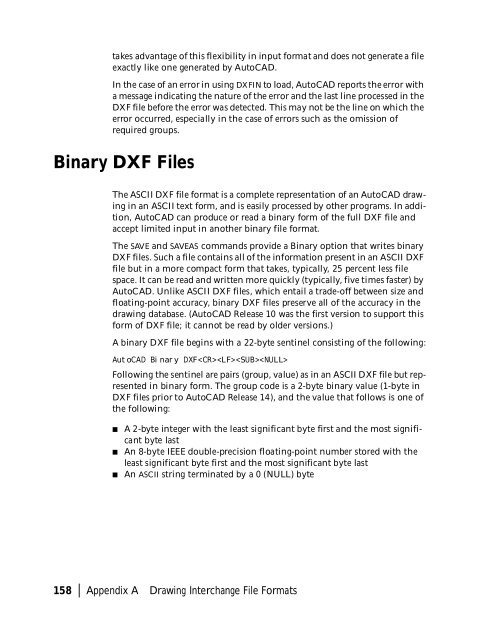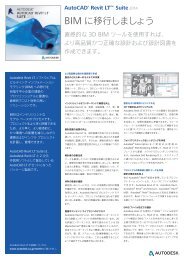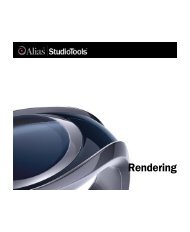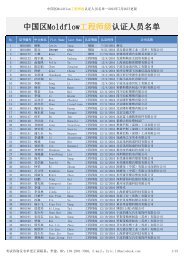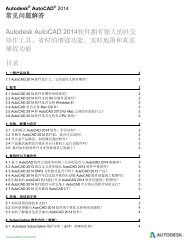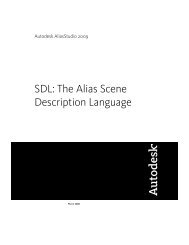Create successful ePaper yourself
Turn your PDF publications into a flip-book with our unique Google optimized e-Paper software.
takes advantage of this flexibility in input format and does not generate a file<br />
exactly like one generated by AutoCAD.<br />
In the case of an error in using DXFIN to load, AutoCAD reports the error with<br />
a message indicating the nature of the error and the last line processed in the<br />
DXF file before the error was detected. This may not be the line on which the<br />
error occurred, especially in the case of errors such as the omission of<br />
required groups.<br />
Binary DXF Files<br />
The ASCII DXF file format is a complete representation of an AutoCAD drawing<br />
in an ASCII text form, and is easily processed by other programs. In addition,<br />
AutoCAD can produce or read a binary form of the full DXF file and<br />
accept limited input in another binary file format.<br />
The SAVE and SAVEAS commands provide a Binary option that writes binary<br />
DXF files. Such a file contains all of the information present in an ASCII DXF<br />
file but in a more compact form that takes, typically, 25 percent less file<br />
space. It can be read and written more quickly (typically, five times faster) by<br />
AutoCAD. Unlike ASCII DXF files, which entail a trade-off between size and<br />
floating-point accuracy, binary DXF files preserve all of the accuracy in the<br />
drawing database. (AutoCAD Release 10 was the first version to support this<br />
form of DXF file; it cannot be read by older versions.)<br />
A binary DXF file begins with a 22-byte sentinel consisting of the following:<br />
AutoCAD Binary DXF<br />
Following the sentinel are pairs (group, value) as in an ASCII DXF file but represented<br />
in binary form. The group code is a 2-byte binary value (1-byte in<br />
DXF files prior to AutoCAD Release 14), and the value that follows is one of<br />
the following:<br />
■<br />
■<br />
■<br />
A 2-byte integer with the least significant byte first and the most significant<br />
byte last<br />
An 8-byte IEEE double-precision floating-point number stored with the<br />
least significant byte first and the most significant byte last<br />
An ASCII string terminated by a 0 (NULL) byte<br />
158 | Appendix A Drawing Interchange File Formats


